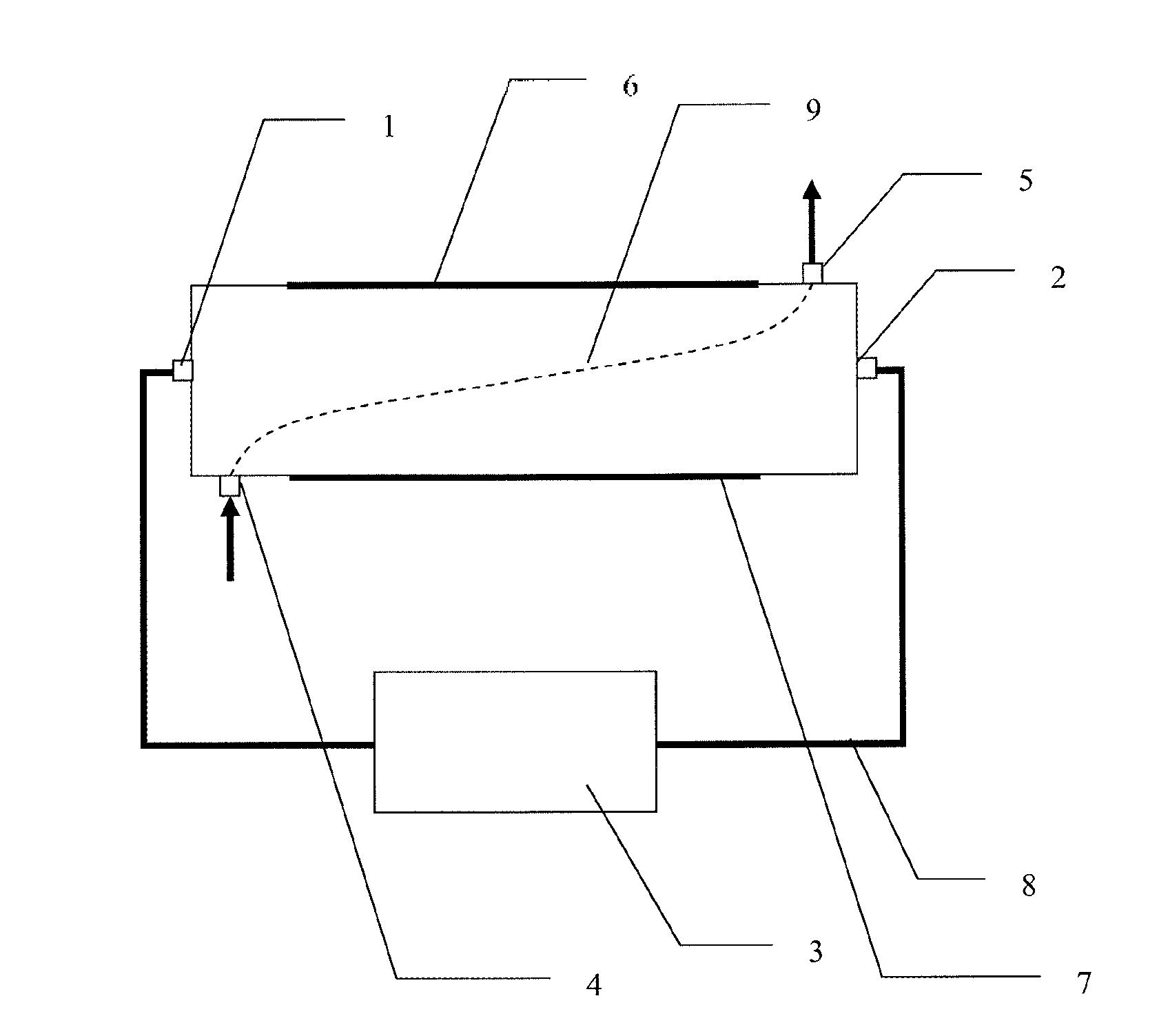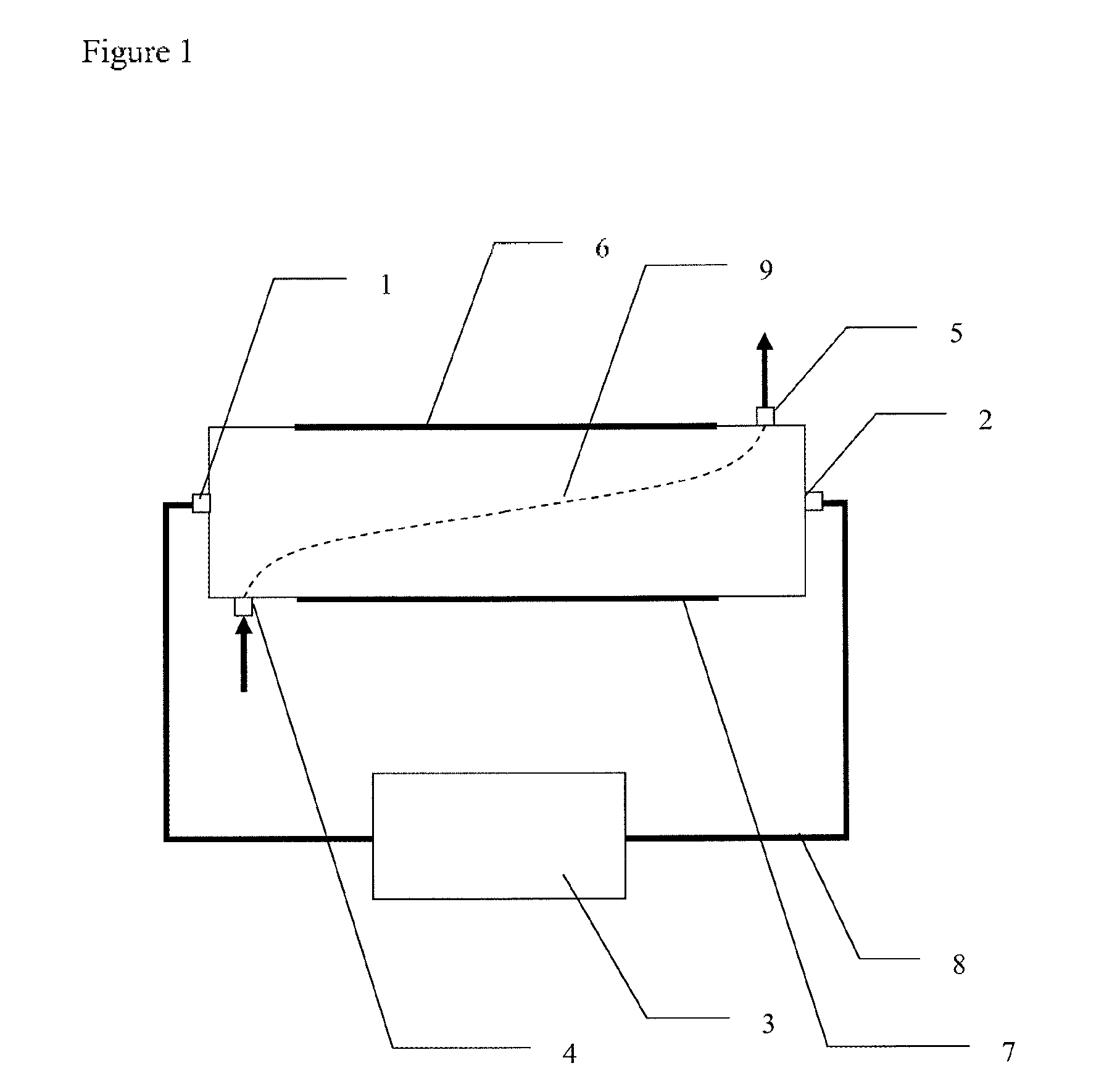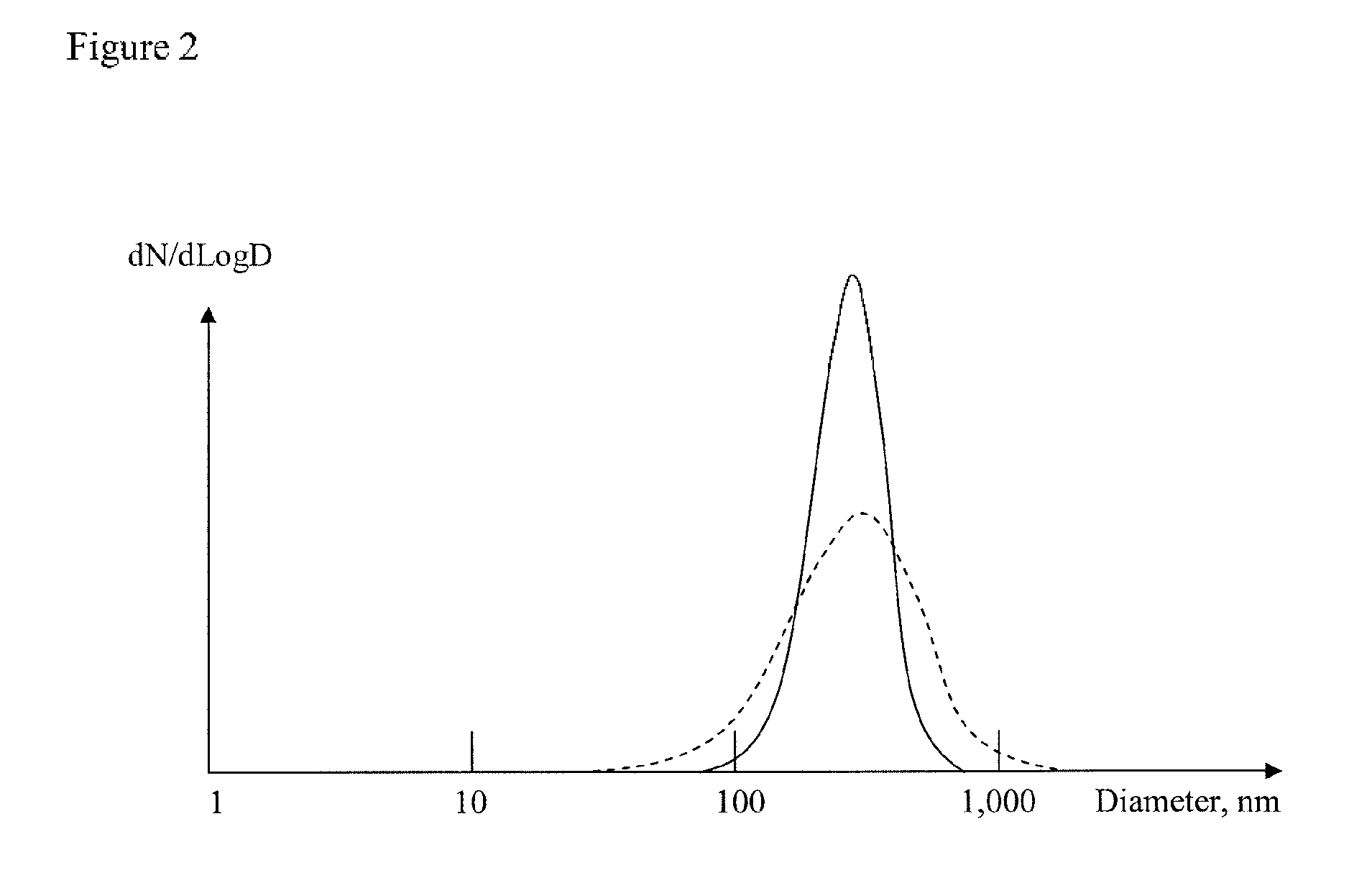A method for obtaining aerosol particle size distributions
- Summary
- Abstract
- Description
- Claims
- Application Information
AI Technical Summary
Benefits of technology
Problems solved by technology
Method used
Image
Examples
Embodiment Construction
[0050]The invention will now be illustrated in greater detail by reference to the specific embodiments described below and illustrated in the accompanying drawings FIGS. 1 to 9.
[0051]FIG. 1 is a schematic side sectional view of a known type of a planar DMA unit used in SMPS apparatus and functions in the manner described above in the introduction section of this application. A schematic view of aerosol particle size distributions obtained at various sheath flow rates is shown in FIG. 2.
[0052]According to the invention, the apparatus shown in FIG. 1 (and other DMA / SMPS apparatuses) can be obtained with two different sheath flow rates changing at a transition size Dt. Initially, a part of the size distribution is recorded at a sheath flow rate of Qsh1, see FIG. 3. The measurements extend from the lowest size to point A, which corresponds to the transition size Dt. At this point, the scan is stopped and the sheath flow rate is changed from Qsh1 to a smaller value Qsh2. At the smaller s...
PUM
 Login to View More
Login to View More Abstract
Description
Claims
Application Information
 Login to View More
Login to View More - R&D
- Intellectual Property
- Life Sciences
- Materials
- Tech Scout
- Unparalleled Data Quality
- Higher Quality Content
- 60% Fewer Hallucinations
Browse by: Latest US Patents, China's latest patents, Technical Efficacy Thesaurus, Application Domain, Technology Topic, Popular Technical Reports.
© 2025 PatSnap. All rights reserved.Legal|Privacy policy|Modern Slavery Act Transparency Statement|Sitemap|About US| Contact US: help@patsnap.com



